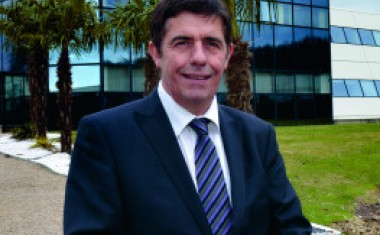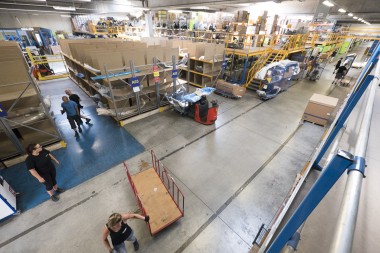
[Atlas]Auguste Amieux (PHE): “We will have to wait until 2023 to see the European market totally liberalised”

Question: Looking back, how has 2020 ended in the bodywork parts market in Europe?
Auguste Amieux: Some countries have experienced longer lockdowns than others, but the average trend is down by around 15% in western Europe. Fewer cars on the roads meant fewer accidents and reduced mileage.
Is the 2021 balance sheet positive?
A.A.: Yes, especially since July. The sharp increases in volumes in the second half of the year suggest that the market will have recovered from the losses of the first six months and will be back to 2019 levels.
What is your vision of the market in 2022?
A.A.: Barring further lockdowns, this positive trend should continue. There will be growth in volumes but also in market value as the current high levels of inflation are expected to continue.
Are the shortage of raw materials and logistical difficulties coming to an end?
A.A.: Price increases and supply pressures should continue. But we haven’t seen a complete breakdown of supply, we increased our stock in advance. Some vendors have struggled with shortages of electronic components, especially those that make optics. As for equivalent quality parts (EQP) from Asia, the logistics to supply them were sometimes flawed. But PHE was able to anticipate this.
What was the average price increase in Europe in 2021?
A.A.: As every year, the increase in body parts is about 6%. Some manufacturers, such as Renault, have lowered their prices, but others have continued to increase them, such as Stellantis and certain German and Asian brands. Inflation, on the other hand, is much higher for lights, because of the big technological developments moving from Xenon to LEDs. Optics have seen a 46% price increase in three years.
Doesn’t inflation call growth projections into question?
A.A.: In terms of margins, we must be vigilant because purchase prices are also rising. The same with the price of packaging and the cost of transport. It seems difficult not to pass these price increases on to the customer.

Is inflation cyclical or could it become structural?
A.A.: Manufacturers increase the price of their parts every year, so this inflation is structural. The cost of repairs will continue to increase and push more damaged vehicles towards the “beyond economical repair” classification. Inflation linked to the scarcity of certain components, on the other hand, is cyclical.
Is the product offer of equivalent quality parts and alterative parts increasing in Europe?
A.A.: There are more and more equivalent quality parts available as prices of original parts increase. The trend is contrary for alternative parts, this market has melted away because they are less and less easy to install. For EQPs, the bulk of the volume comes from Asia and in particular from Taiwan, so availability varies depending on the transport of goods. Fortunately, there are still a few EQP manufacturers in Italy and Spain.
Are all EQPs subject to certification from recognized organisations?
A.A.: Some EQPs don’t need certification because they don’t affect vehicle safety, like mud flaps for example. But bonnets, bumpers, wings and doors do. Bodies such as Thatcham in the United Kingdom, Centro Zaragoza in Spain or TÜV-SÜD in Germany have reciprocal agreements between them which mean they do not certify the same part twice. But irrespective of certification, at PHE we have our own control processes as do our competitors.
Which countries are next to introduce a repair clause?
A.A.: There are not many left. These are generally countries where manufacturers produce a lot of vehicles, such as the Czech Republic, homeland of Skoda, Romania for Renault and Dacia. The main hope in these markets is the passing of an EU law which would impose the repair clause on all member states of the European Union.
Can we hope to see the EU adopt a law in 2022 or will we have to wait a little longer?
A.A.: It looks probable that 2023 will see this come to pass. France will take over the EU presidency in the first half of 2022, so nothing is likely to happen for the next six months. Then, the Czech Republic follows and, in the first half of 2023, it will be the turn of Sweden. They are also quite protectionist in relation to Volvo. In contrast, with the Spanish Presidency in the second half of 2023, the door is likely to open.
How is the used part market looking?
A.A.: The market is growing but does not represent more that 3% to 4% on average in western Europe. This is a long way off the 20% in the US where the average age of cars is greater and where restrictions are less severe.
What structural lessons can be drawn from the 2020 crisis?
A.A.: PHE has focused on the fundamentals of the business: staying open, having a large stock and diversifying purchasing so as not to depend too much on a single supplier.
Has there been more concentration in 2021 among bodywork parts distributors?
A.A.: Concentration is quite low between bodywork parts distributors. There have been a few external growth operations, as in Spain with the acquisition of AD Marina in particular, but that is not true market concentration.
Are online sales gaining momentum or is it still marginal?
A.A.: They are growing faster than the market but mainly concern small parts such as optics, apart from Autodoc, which sells large parts. The ceiling for online distribution is probably 10% of the market.
Romain Thirion







